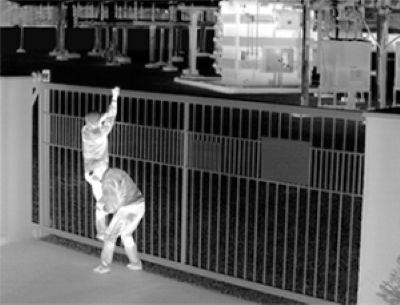Thermal cameras let people see what their eyes can’t, especially in these colds, dark, winter nights. Thermal Cameras show invisible heat radiation emitted by all objects regardless of lighting conditions. Some of the greatest benefits of thermal imaging come in the domain of security. Security cameras have become a staple of protection for many businesses across the country, and in such a landscape, the need to produce quality images is critical to provide constant protection against potential intruders.
Low-Light Scenarios
When cameras are monitoring the perimeter of a building, they often must deal with low light scenarios (for example, during night-time hours). This is an area in which thermal imaging cameras can truly shine.
Immune to Visual limitations
Visible cameras, much like our eyes, often have trouble seeing through naturally occurring visual obscurants that block reflected light. However, because thermal radiation passes through these visual barriers, thermal cameras can see what going on where visible cameras cannot.
Camouflaging Foliage
Regular cameras that capture only visible light can be fooled, in some cases, by visual camouflage, or in situations where similar colours or patterns blend together. This can make objects or people that need to be detected unobservable.
Fewer False Alarms
Thermal imaging cameras often prove cost-effective in a business protection scenario, because they help reduce the number of false alarms. This is accomplished using advanced analytics software that can perform at its highest calibre with the high contrast images and video that thermal provides.
Higher Return on Investment
Thermal Imaging cameras are a very affordable option for many businesses that want to ensure they have the best security and protection solution on the market today. The total cost of ownership of a security system with thermal imaging cameras is, in general, much lower than a CCTV security system. For example, due to their incredible range performance, fewer thermal imaging cameras are required on projects than would be needed with the use of visible cameras. Additionally, most cameras cannot see beyond 200 meters at night and require supplementary lighting, which can be very costly in itself to install and maintain.
Get in touch with us to find out more about going thermal this winter


